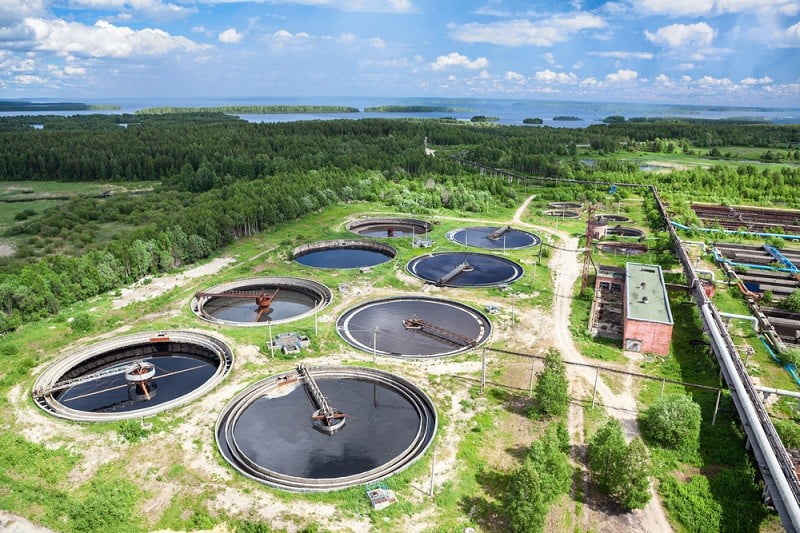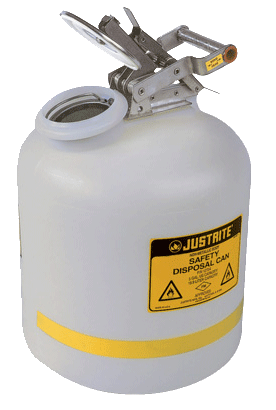Industrial Wastewater Treatment: Advanced Approaches for Effective Administration
Industrial Wastewater Treatment: Advanced Approaches for Effective Administration
Blog Article
How Fluid Garbage Disposal Works: A Comprehensive Overview of Methods and Technologies Utilized

Review of Liquid Waste Kind
The complexity of liquid waste kinds demands a comprehensive understanding of their qualities and ramifications for disposal. Liquid waste can extensively be classified right into a number of kinds, including commercial, local, agricultural, and unsafe waste. Each group displays unique buildings, calling for certain administration methods to reduce environmental and health threats.
Industrial liquid waste stems from making processes and frequently contains a range of impurities, such as heavy metals, solvents, and natural compounds. Community fluid waste, mostly making up wastewater from households and business facilities, contains raw material, nutrients, and pathogens (industrial wastewater treatment). Agricultural fluid waste, including drainage from farms, may consist of fertilizers, chemicals, and animal waste, posing dangers to water quality and ecosystems
Harmful liquid waste is identified by its toxicity, sensitivity, or potential to create harm. This group includes materials like acids, bases, and certain chemicals that demand stringent handling and disposal methods. Understanding these varied liquid waste kinds is essential for creating effective disposal techniques and guaranteeing conformity with environmental guidelines. Appropriate category and characterization are vital for carrying out ideal treatment methods and minimizing the unfavorable effect on public health and the atmosphere.
Physical Therapy Approaches

Testing is the preliminary step, where larger particles and debris are removed from the fluid waste making use of displays or grates. This process safeguards downstream equipment from damage and makes certain smoother procedure. Adhering to screening, sedimentation utilizes gravitational force to different solids from fluids. In sedimentation tanks, heavier fragments clear up at the base, forming a sludge layer, while the clarified fluid can be additional treated.
Purification is another essential approach that entails passing the liquid via porous materials, such as sand or membrane layers, to capture smaller sized bits. This step boosts the high quality of the fluid, making it appropriate for subsequent therapy processes.

Chemical Treatment Methods
Chemical treatment methods are essential for properly managing fluid waste, particularly in attending to dissolved and colloidal pollutants that physical approaches may not appropriately remove. These strategies utilize different chemical representatives to neutralize, speed up, or change hazardous compounds right into less damaging kinds.
One common technique is coagulation and flocculation, where chemicals such as alum or ferric chloride are included in promote the aggregation of put use this link on hold fragments. This process improves sedimentation, enabling less complicated removal of the resulting sludge. Additionally, oxidation procedures, using representatives like chlorine or ozone, are employed to break down complicated natural substances and virus, rendering the waste safer for discharge or additional therapy.
Neutralization is an additional critical technique, which adjusts the pH of acidic or alkaline waste streams to neutral levels, stopping possible damage to downstream systems and the setting. In addition, progressed oxidation processes (AOPs) utilize combinations of oxidants and ultraviolet light Learn More to deteriorate consistent toxins, achieving a higher level of treatment effectiveness.
Biological Treatment Processes
Biological treatment processes play an important function in the monitoring of liquid waste by utilizing microorganisms to break down raw material and reduce contaminant degrees. These procedures can be generally classified into cardiovascular and anaerobic treatments, each using details microbial areas to attain efficient waste deterioration.
Aerobic treatment entails using oxygen to assist in the malfunction of organic materials by microorganisms. This procedure is frequently executed in activated sludge systems, where oygenation containers offer a conducive environment for microbial development, causing the oxidation of organic toxins. The resultant biomass can be divided from treated effluent via sedimentation.
On the other hand, anaerobic treatment takes place in the lack of oxygen, counting on various microorganisms to break down natural issue. This method is specifically helpful for high-strength waste, as it generates biogas, a renewable resource source, while minimizing sludge production. Technologies such as anaerobic digesters are regularly utilized in industrial and metropolitan applications.
Both anaerobic and cardio biological therapies not only decrease the environmental influence of liquid waste yet likewise promote resource recuperation, making browse around these guys them vital parts of sustainable waste monitoring techniques. Their versatility, performance, and effectiveness support their prevalent implementation across different fields.
Emerging Technologies in Disposal
Innovative techniques to fluid garbage disposal are rapidly advancing, driven by developments in technology and an increasing emphasis on sustainability. Among these arising technologies, membrane bioreactors (MBRs) have gained grip for their ability to combine biological treatment with membrane layer filtering, causing high-quality effluent that can be reused in different applications. MBRs allow smaller footprints and a lot more reliable procedures contrasted to standard systems.
An additional encouraging growth is the usage of anaerobic food digestion incorporated with nutrient recuperation modern technologies, which not just deals with fluid waste however likewise produces biogas and recuperates useful nutrients like nitrogen and phosphorus. This double advantage improves resource efficiency and reduces environmental impact.
In addition, progressed oxidation procedures (AOPs) are being embraced for the deterioration of complicated organic pollutants. These approaches make use of effective oxidants and drivers to break down contaminants at the molecular degree, supplying a very efficient service for challenging waste streams.
Moreover, the assimilation of fabricated knowledge and device knowing in waste management systems is maximizing functional efficiency and anticipating maintenance, resulting in reduced prices and improved ecological conformity. These technologies mirror a substantial shift in the direction of more efficient and sustainable fluid waste disposal techniques.
Final Thought
In verdict, reliable liquid waste disposal requires a comprehensive understanding of different methods and modern technologies. By continuously advancing these methods, it comes to be feasible to address the growing difficulties connected with fluid waste, inevitably adding to ecological protection and resource recovery.
Liquid waste disposal is an essential facet of ecological management, requiring an extensive understanding of different methods and innovations customized to various waste types. Liquid waste can extensively be categorized into a number of kinds, including industrial, local, farming, and harmful waste. Agricultural fluid waste, including overflow from farms, may contain fertilizers, chemicals, and pet waste, posturing threats to water high quality and ecological communities.
Numerous physical therapy techniques play a vital function in managing liquid waste properly - industrial wastewater treatment.In verdict, efficient liquid waste disposal requires a detailed understanding of different techniques and technologies
Report this page